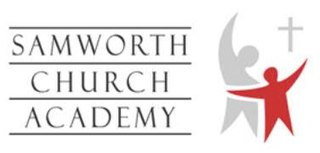
Burton upon Trent, also known as Burton-on-Trent or simply Burton, is a market town in the borough of East Staffordshire in the county of Staffordshire, England, close to the border with Derbyshire. At the 2021 census, it had a population of 76,270. The demonym for residents of the town is Burtonian. Burton is located on the River Trent 11 miles (18 km) south-west of Derby and 20 miles (32 km) south of the Peak District National Park.

The West Midlands is one of nine official regions of England at the first level of International Territorial Level for statistical purposes. It covers the western half of the area known traditionally as the Midlands. The region consists of the counties of Herefordshire, Shropshire, Staffordshire, Warwickshire, West Midlands and Worcestershire. The region has seven cities: Birmingham, Coventry, Hereford, Lichfield, Stoke-on-Trent, Wolverhampton and Worcester.

Newstead Wood School is a selective girls' grammar school in Avebury Road, Orpington, south east London, England. The school has been admitting boys into the sixth form since 2012.

Middlesbrough College, located on one campus at Middlehaven, Middlesbrough, North Yorkshire, England, is the largest college on Teesside.
Lincolnshire is one of the few counties within the UK that still uses the eleven-plus to decide who may attend grammar school, in common with Buckinghamshire and Kent. As a result, many towns in Lincolnshire have both a grammar school and a secondary modern school.
Winshill is an area to the east of the town of Burton upon Trent, in the borough of East Staffordshire, England.
Mitchell High School was a comprehensive school located in Bucknall, Stoke on Trent, England.

Burton Abbey at Burton upon Trent in Staffordshire, England, was founded in the 7th or 9th century by St Modwen or Modwenna. It was refounded in 1003 as a Benedictine abbey by the thegn Wulfric Spott. He was known to have been buried in the abbey cloister in 1010, alongside the grave of his wife.

Birkenhead High School Academy is an all-ability state funded girls' Academy in Birkenhead, Wirral.
Cannock Chase High School is a secondary school with academy status in Cannock, Staffordshire. The school is situated just north of the town centre, towards Blackfords, east of Cannock Chase Hospital.
Falmer High School was a community mixed-sex non-denominational comprehensive school for pupils aged 11 to 16 in Brighton, East Sussex, England. It closed on 31 August 2010 and was replaced by Brighton Aldridge Community Academy on the same site, sponsored by Rod Aldridge.

John Taylor High School is a specialist science and leadership academy located in the East Staffordshire village of Barton-under-Needwood, near Burton-on-Trent.

The de Ferrers Academy is a secondary school with academy status located in Burton upon Trent, Staffordshire, England.

Havelock Academy is a secondary school and sixth form with Academy status, based in Grimsby, North East Lincolnshire, England.

The Samworth Church Academy is a coeducational secondary school and sixth form with academy status, located in Mansfield in the English county of Nottinghamshire.
Winterton Community Academy is a coeducational secondary school with academy status, located in Winterton, North Lincolnshire, England.
Education in Nottingham is governed by the unitary authority of Nottingham, overseen by its Nottingham City Council.
Blessed Robert Sutton Catholic Voluntary Academy is a co-educational secondary school located in the Stapenhill area of Burton upon Trent in the English county of Staffordshire. The school is named after Robert Sutton, a 16th Century Catholic priest and martyr who was born in Burton upon Trent.

Winshill Water Tower is a former water tower in Burton upon Trent, England. It was constructed in 1907 after a local resident won a High Court ruling against the South Staffordshire Waterworks Company for poor water-supply pressure. The brick tower held a cast-iron water tank at a height of 80 feet (24 m) to provide sufficient hydraulic head to improve water pressure. Constructed on Burton's highest point known as Waterloo Clump, the tower is visible from across the town and is a well known local landmark. The tower ceased to have any role in water supply in the 1990s but has since been used as a radio tower.











